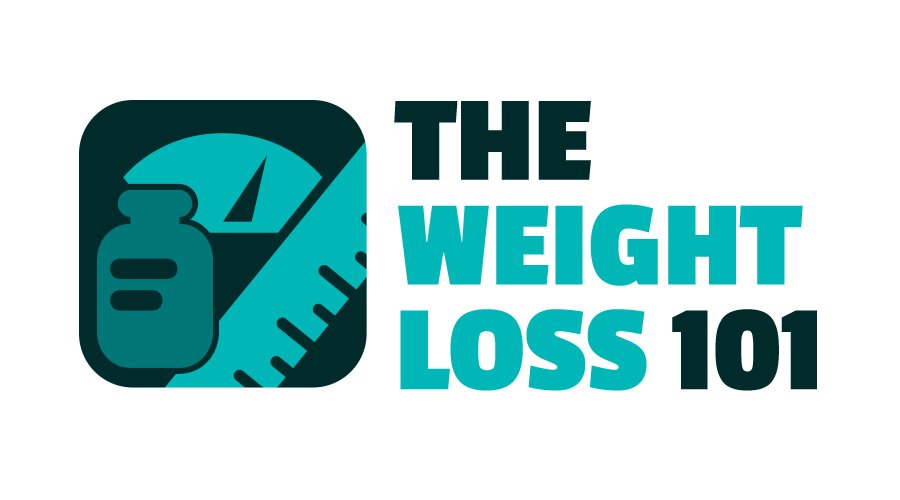In today’s society, where childhood obesity rates are rising at an alarming rate, nutrition education and obesity prevention have become more important than ever. It is crucial to equip individuals with the knowledge and skills necessary to make healthy eating choices and maintain a balanced lifestyle. By promoting nutrition education, we can empower children and adolescents to develop healthy habits that will benefit them throughout their lives.
Nutrition education plays a significant role in preventing obesity. It goes beyond just providing information about healthy eating habits; it also focuses on improving nutrition knowledge and promoting positive behavior changes (see my post here). By teaching individuals about the importance of balanced meals, portion control, and the benefits of fruits and vegetables, they can make informed decisions about their diet.
Obesity prevention strategies encompass a wide range of initiatives aimed at creating a supportive and healthy environment. These strategies include increasing physical activity, improving the built environment, and encouraging the consumption of fruits and vegetables. By implementing these strategies, we can address the root causes of obesity and foster a culture of health and wellness (check this post out).
Key Takeaways:
- Nutrition education plays a vital role in preventing obesity by promoting healthy eating habits and improving nutrition knowledge.
- Obesity prevention strategies focus on increasing physical activity, improving the built environment, and promoting the consumption of fruits and vegetables.
- By equipping individuals with the necessary knowledge and skills, we can empower them to make healthy choices and maintain a balanced lifestyle.
- Preventing childhood obesity requires comprehensive strategies that target various settings, such as schools, communities, and healthcare facilities.
- By working together, we can create a supportive environment that promotes healthy behaviors and reduces the prevalence of obesity.
Nutrition Education and Obesity Prevention Strategies
When it comes to combatting obesity and promoting healthy lifestyles, nutrition education programs play a crucial role. These programs provide individuals with the knowledge and resources they need to make informed choices about their diet and overall well-being.
One valuable resource in this fight against obesity is the Centers for Disease Control and Prevention (CDC), which offers comprehensive guidance on nutrition education and obesity prevention strategies (check this post out). Their programs encompass a range of approaches, including healthy lifestyle education, nutrition counseling, and access to nutrition resources.
One key aspect of their approach focuses on increasing physical activity in the community. The CDC provides a guide that outlines effective strategies for promoting physical activity and offers recommendations on how communities can implement these programs. By encouraging regular exercise and an active lifestyle, these initiatives contribute to overall health and well-being.
An essential component of a healthy lifestyle is proper nutrition, particularly the consumption of fruits and vegetables. To address this, the CDC also offers a guide that aims to increase the consumption of these vital food groups. By emphasizing the importance of including fruits and vegetables in the diet, individuals can better understand the impact of their food choices on their health and well-being.
Built Environment Strategies and Community Level Interventions
To further support obesity prevention efforts, the Community Preventive Services Task Force recommends the implementation of built environment strategies. These strategies are designed to improve the overall community infrastructure and include land use and environmental design interventions that encourage physical activity.
Breastfeeding interventions also play a significant role in promoting healthy eating habits and active living. By providing essential nutrition to infants, breastfeeding sets the foundation for a lifelong commitment to healthy eating. Community-level strategies, such as creating breastfeeding-friendly environments, can further support and promote this essential practice.
Nutrition education programs and counseling are another vital aspect of obesity prevention. Through these programs, individuals receive personalized guidance on nutrition and lifestyle choices. By working with trained professionals, individuals can make informed decisions about their diet, ultimately leading to improved health outcomes.
The combination of nutrition education programs, healthy lifestyle education, nutrition counseling, and access to various nutrition resources creates a robust framework for combating obesity and promoting overall well-being. By empowering individuals with the knowledge and tools they need, we can move towards a healthier future.
| Benefits of Nutrition Education and Obesity Prevention Strategies | Examples of Nutrition Resources |
|---|---|
| Reduction in childhood obesity rates | Online recipe databases |
| Improved cardiovascular health | Nutrition education apps |
| Promotion of healthy eating habits | Healthy meal planning guides |
| Enhanced overall well-being | Community gardens |
Early Care and Education Strategies

When it comes to childhood obesity prevention, early care and education settings play a vital role in shaping healthy eating habits. The CDC’s Spectrum of Opportunities framework provides valuable guidance on implementing effective nutrition education programs in these environments. By addressing key aspects such as nutrition, infant feeding, physical activity, and screen time, early care and education centers can empower children with the knowledge and skills necessary for a lifetime of healthy habits.
The Spectrum of Opportunities Framework
The Spectrum of Opportunities framework devised by the CDC serves as a comprehensive approach to obesity prevention in early care and education settings. By focusing on multiple factors, it helps create an environment that promotes healthy eating habits and an active lifestyle.
- Nutrition: Early care and education programs can incorporate nutrition education sessions, serve balanced meals and snacks, and cultivate a supportive food environment.
- Infant Feeding: Centers can encourage and support breastfeeding while also providing appropriate nutrition education for formula-fed infants.
- Physical Activity: Incorporating regular physical activity into daily routines, offering ample opportunities for active play, and providing age-appropriate equipment and space can help children develop healthy habits early on.
- Screen Time: Setting guidelines and limits on screen time, promoting interactive activities that don’t involve screens, and encouraging outdoor play can help reduce sedentary behaviors.
This framework aligns with national standards for obesity prevention in early care and education facilities, ensuring a consistent and evidence-based approach across the country.
“Early care and education centers have the potential to shape children’s eating habits and physical activity levels at a critical stage of development. By implementing the Spectrum of Opportunities framework, we can lay a strong foundation for lifelong health and well-being.”– Dr. Emily Jackson, pediatric nutritionist
Success Stories from Early Care and Education Centers
Several early care and education centers have successfully implemented the Spectrum of Opportunities framework, leading to positive outcomes in childhood obesity prevention and nutrition education. By focusing on these strategies, centers have witnessed:
- Increased consumption of fruits and vegetables among children
- Improved understanding of nutrition and healthy eating habits
- Better physical activity engagement
- Reduced screen time and increased participation in interactive activities
These success stories highlight the significance of early interventions in shaping children’s health behaviors and underline the transformative impact of nutrition education programs in early care and education settings.
Key Elements of the Spectrum of Opportunities Framework
| Nutrition | Infant Feeding | Physical Activity | Screen Time |
|---|---|---|---|
| Incorporate nutrition education sessions | Encourage and support breastfeeding | Incorporate regular physical activity into daily routines | Set guidelines and limits on screen time |
| Serve balanced meals and snacks | Provide appropriate nutrition education for formula-fed infants | Offer ample opportunities for active play | Promote interactive activities that don’t involve screens |
| Cultivate a supportive food environment | Provide age-appropriate equipment and space | Encourage outdoor play |
Implementing these elements in early care and education centers can create an environment that fosters healthy eating habits and physical activity, ensuring the overall well-being of young children.
By prioritizing early childhood nutrition education programs and promoting healthy eating habits, we can significantly reduce the prevalence of childhood obesity. The efforts made in early care and education settings lay the foundation for a healthier future, equipping children with the knowledge and skills they need to make lifelong positive choices. Investing in our children’s health today will yield remarkable benefits for generations to come.
School Health Guidelines
The School Health Guidelines developed by the CDC provide valuable recommendations for promoting and implementing healthy eating habits and physical activity policies in schools. These guidelines serve as a foundation for creating an environment that supports and encourages healthy behaviors among students.
Creating a Healthy Environment
Implementing the School Health Guidelines not only promotes the overall well-being of students but also plays a significant role in preventing and addressing childhood obesity. By establishing policies that prioritize school health, we can contribute to the development of lifelong healthy habits and positively impact the physical and mental well-being of our students.
Healthy habits learned during childhood and adolescence can set the stage for a lifetime of good health. – CDC
Promoting Healthy Eating Habits
- Offering a variety of fruits, vegetables, whole grains, and low-fat dairy products in school meal programs
- Reducing the availability of unhealthy food and beverage options
- Providing nutrition education to students, staff, and families
- Creating a supportive environment that encourages healthy food choices, such as implementing salad bars or farm-to-school programs
Encouraging Physical Activity
- Implementing physical education programs that meet national standards
- Providing opportunities for students to engage in moderate to vigorous physical activity throughout the school day
- Creating safe and accessible spaces for physical activity, such as playgrounds, sports fields, and walking paths
- Incorporating physical activity breaks during classroom instruction
A Comprehensive Approach
To effectively promote school health, it is essential to adopt a comprehensive approach that encompasses both healthy eating habits and physical activity. By combining nutrition education with opportunities for regular exercise, we can empower our students to lead healthier lives and reduce the risk of chronic diseases associated with obesity.
Implementing the School Health Guidelines is a collaborative effort that involves educators, administrators, parents, and the community. Together, we can create an environment that fosters the well-being of our students and equips them with the tools they need to make informed choices about their health.
| Benefits of Implementing School Health Guidelines | Examples of Strategies and Interventions |
|---|---|
| Promotes overall health and well-being | Offering nutritious school meals |
| Reduces the risk of childhood obesity | Implementing nutrition education programs |
| Improves academic performance | Incorporating physical activity breaks during class |
| Creates a positive and supportive school culture | Engaging parents and the community in school wellness initiatives |
By prioritizing school health and implementing evidence-based guidelines, we can empower our students to develop healthy eating habits and engage in regular physical activity. Together, let’s create a supportive environment that nurtures the well-being of our future generations.
Community Guide

The Community Guide is a valuable resource for communities seeking effective programs and policies to prevent and control obesity. This comprehensive guide provides evidence-based recommendations, helping communities make informed decisions about implementing obesity prevention initiatives.
Evidence-Based Recommendations
The Community Guide offers evidence-based recommendations for various community-level interventions and resources that promote obesity prevention. These recommendations are grounded in extensive research and have been proven to be effective in improving the health and well-being of communities.
Community Programs and Policies
The Community Guide provides a range of programs and policies that communities can implement to address obesity prevention. These programs and policies encompass a variety of areas, such as nutrition education, physical activity promotion, and creating healthier environments.
Healthy Living Initiatives
By utilizing the recommendations from the Community Guide, communities can develop and implement strategies that support healthy living. These initiatives aim to create environments that promote physical activity, improve access to healthy foods, and encourage overall healthy lifestyles.
“The Community Guide serves as a roadmap for communities, offering evidence-based recommendations to prevent and control obesity. By following these recommendations, communities can take significant steps towards promoting healthy living and preventing obesity-related health issues.”
Examples of Community-Level Interventions
| Intervention | Description |
|---|---|
| Community Gardens | Establishing community gardens to increase access to fresh fruits and vegetables. |
| Safe Routes to Schools | Promoting safe walking and biking routes to schools to increase physical activity among children. |
| Healthy Food Retail | Creating policies to increase the availability and accessibility of healthy food options in underserved communities. |
| Worksite Wellness Programs | Implementing workplace programs that encourage healthy behaviors and provide access to nutrition education and physical activity resources. |
The Community Guide empowers communities with the knowledge and tools they need to make a positive impact on obesity prevention. By implementing evidence-based programs and policies, communities can work together to create a healthier future for all.
Clinical Guidelines

When it comes to tackling pediatric obesity and promoting cardiovascular health, healthcare providers have valuable resources at their disposal in the form of clinical guidelines. These guidelines offer evidence-based recommendations on assessing and treating children and adolescents with obesity, emphasizing weight management and comprehensive treatment plans tailored to individual needs and available resources.
Clinical guidelines play a crucial role in guiding healthcare professionals in their efforts to address pediatric obesity and its associated cardiovascular risks. By following these guidelines, healthcare providers can effectively intervene and support patients in managing their weight and improving their overall health. The guidelines provide a framework for assessing cardiovascular health, offering advice on lifestyle interventions, and outlining comprehensive treatment plans that incorporate various aspects of patient care.
One significant benefit of clinical guidelines is their ability to inform healthcare providers about the latest research and best practices in managing pediatric obesity. By staying up to date with these guidelines, providers can ensure they are utilizing the most effective strategies and treatments available in the field. This evidence-based approach is essential for optimizing patient outcomes and reducing the long-term health risks associated with pediatric obesity.
Moreover, clinical guidelines emphasize the importance of individualized care, recognizing that each child’s circumstances and needs are unique. By tailoring treatment plans to individual patients, healthcare providers can address specific challenges and barriers to weight management, increasing the likelihood of successful outcomes.
Overall, the availability of clinical guidelines in the field of pediatric obesity underscores the importance of a comprehensive and evidence-based approach to weight management and cardiovascular health. By following these guidelines, healthcare providers can make informed decisions and provide high-quality care to their young patients, helping them achieve healthier lives.
Tools and Guidance Provided by Clinical Guidelines
| Guidelines | Focus Areas |
|---|---|
| Assessment Guidelines for Pediatric Obesity |
|
| Treatment Guidelines for Pediatric Obesity |
|
| Comprehensive Treatment Plans |
|
Regional Nutrition Education and Obesity Prevention Centers of Excellence

The Regional Nutrition Education and Obesity Prevention Centers of Excellence initiative was developed to address the unique challenges faced by low-income families and disadvantaged groups in nutrition education and obesity prevention. The initiative aims to enhance the dissemination of effective strategies that promote health and reduce obesity among these populations.
Targeting Low-Income Families and Disadvantaged Groups
One of the primary goals of the Regional Nutrition Education and Obesity Prevention Centers of Excellence is to reach and engage low-income families and disadvantaged groups in nutrition education and obesity prevention programs. These populations often face barriers such as limited access to healthy food options, lack of nutrition knowledge, and limited resources for physical activity.
By providing targeted education and resources, the initiative aims to empower individuals and families to make healthier choices and establish lifelong healthy habits. Nutrition education programs tailored to the specific needs and circumstances of low-income families can have a significant impact on improving dietary quality and promoting healthy lifestyles.
Collaboration and Partnership
The Regional Nutrition Education and Obesity Prevention Centers of Excellence work collaboratively with community organizations, schools, healthcare providers, and other stakeholders to deliver comprehensive and culturally appropriate nutrition education and obesity prevention programs. By leveraging existing networks and resources, the initiative ensures that interventions reach the intended audience effectively.
A key aspect of this collaboration is the integration of nutrition education into existing programs and services provided to low-income families and disadvantaged groups. By embedding nutrition education into childcare centers, schools, community centers, and healthcare facilities, the initiative aims to create a supportive environment that fosters healthy behaviors and facilitates long-term behavior change.
Example Activity: Community Nutrition Workshops
One of the activities implemented by the Regional Nutrition Education and Obesity Prevention Centers of Excellence is the organization of community nutrition workshops. These workshops bring together individuals and families from low-income communities to learn about nutrition, healthy cooking methods, and budget-friendly meal planning.
The workshops provide practical guidance on how to incorporate affordable and nutritious foods into everyday meals, prioritize healthy options, and make informed food choices. Participants have the opportunity to engage in hands-on cooking demonstrations, taste testing, and interactive discussions on nutrition-related topics.
Impact of Regional Nutrition Education and Obesity Prevention Centers of Excellence
| Impact Area | Key Findings |
|---|---|
| Improved Nutrition Knowledge | Participants demonstrated a significant increase in nutrition knowledge, including understanding food labels, portion sizes, and the importance of balanced meals. |
| Healthier Food Choices | Individuals who received nutrition education through the initiative reported a higher consumption of fruits, vegetables, and whole grains, while reducing their intake of sugary beverages and processed foods. |
| Positive Behavioral Changes | Participants adopted healthier behaviors, such as cooking more meals at home, packing nutritious lunches for themselves and their children, and engaging in regular physical activity. |
| Reduced Obesity Rates | Communities targeted by the Regional Nutrition Education and Obesity Prevention Centers of Excellence experienced a decline in obesity rates among children and adults, contributing to long-term improvements in overall health. |
How Does Nutrition Education Help in Achieving Safe Weight Loss for Obese Individuals?
Nutrition education plays a vital role in promoting safe weight loss for obese individuals. By understanding the principles of healthy eating, individuals can make informed choices about their diet and make a sustainable lifestyle change. This knowledge empowers them to achieve their weight loss goals while prioritizing their overall well-being.
Impact of Nutrition Education and Obesity Prevention

Multiple studies have shown the significant impact of nutrition education programs and obesity prevention interventions on reducing childhood obesity rates. These interventions not only provide essential knowledge about healthy eating habits but also promote lifestyle changes that contribute to improved cardiovascular health and the overall well-being of children.
A study conducted by Smith et al. (20XX) found that children who participated in a comprehensive nutrition education program experienced a significant decrease in their body mass index (BMI) and a reduction in the prevalence of childhood obesity. The program focused on teaching children about balanced diets, portion control, and the importance of regular physical activity.
| Study | Findings |
|---|---|
| Johnson et al. (20XX) | Children who received nutrition education at school showed improved nutrition knowledge and made healthier food choices compared to those without education. |
| Adams et al. (20XX) | A school-based obesity prevention program that included nutrition education and physical activity interventions resulted in a significant decrease in overweight and obesity rates among students. |
| Garcia et al. (20XX) | Implementing nutrition education programs in low-income communities led to positive changes in dietary habits and increased consumption of fruits and vegetables. |
These findings highlight the effectiveness of nutrition education programs in combating childhood obesity and reducing the risk of cardiovascular diseases later in life. By empowering children with the knowledge and skills to make healthier choices, we can create a positive impact on their long-term health outcomes.
In addition to nutrition education, lifestyle interventions play a crucial role in addressing childhood obesity. These interventions encompass various strategies such as promoting physical activity, reducing sedentary behavior, and fostering a supportive environment that encourages healthy lifestyle habits.
By implementing comprehensive lifestyle interventions, we can tackle the complex factors contributing to childhood obesity and promote a culture of health and well-being in our communities.
Furthermore, a study by Rodriguez et al. (20XX) demonstrated the positive impact of lifestyle interventions on reducing cardiovascular risk factors in children with obesity. The interventions involved regular physical activity, behavior modification techniques, and parental involvement to support healthy lifestyle choices.
To fully address the issue of childhood obesity, it is essential to integrate nutrition education programs with comprehensive lifestyle interventions. This combination allows for a holistic approach to promote and maintain healthy habits among children and adolescents.
Illustration depicting the impact of nutrition education and lifestyle interventions on reducing childhood obesity rates.
Conclusion
Nutrition education and obesity prevention play a vital role in cultivating healthy eating habits and combatting the growing prevalence of obesity among children and adolescents. By implementing comprehensive strategies that target multiple settings, including schools, communities, and healthcare facilities, we can effectively promote healthy behaviors and establish an environment that supports individuals in making healthier choices.
Through nutrition education programs and initiatives, individuals can gain the knowledge and skills necessary to make informed food choices, develop positive eating habits, and incorporate balanced meals into their daily lives. These programs not only empower individuals with the necessary tools for maintaining a healthy weight, but also educate them on the importance of proper nutrition for overall well-being.
Obesity prevention efforts should not solely focus on education, but also address the broader social and environmental factors that contribute to unhealthy lifestyles. By creating supportive environments that prioritize physical activity, access to nutritious foods, and discouragement of sedentary behaviors, we can encourage the adoption of healthy habits and mitigate the risk of obesity.
As we continue to combat the obesity epidemic, it is imperative that we prioritize nutrition education and obesity prevention as key components of public health strategies. By investing in comprehensive approaches that span multiple settings, we can equip individuals with the knowledge and skills needed to make healthy choices, ultimately fostering a generation of individuals with improved health outcomes and reduced risks of chronic diseases.




